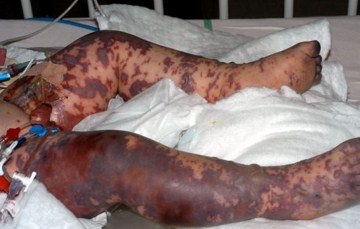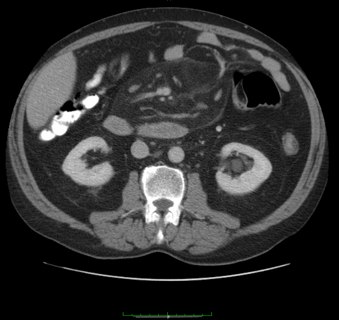Hyperemesis Gravidarum – Definition, Treatment, Causes, Diet, Symptoms
What is Hyperemesis Gravidarum?
Hyperemesis Gravidarum is a kind of disease that occurs during pregnancy where the mother experience excessive and persistent nausea and vomiting. Having this type of condition, it can lead the mother’s to be dehydrated.

Hyperemesis Gravidarum Image
Hyperemesis Gravidarum Symptoms or signs of start of morning sickness:
- The pregnant woman will experience excessive nausea normally during the first trimester of pregnancy.
- They also experience excessive vomiting that can lead to dehydration.
- Weight loss that is due to excessive vomiting that makes the pregnant mother also not to keep up with eating of food.
- The pregnant mother with this disease will experience fatigue.
- They also feel dizziness.
- Dehydration that will lead to feeling of thirst, headache, confusion and reduced urination.
- Low blood pressure and increased heart rate is also one of the symptoms that the pregnant woman with this type of disease will experience.
Hyperemesis Gravidarum Causes
The causes of Hyperemesis Gravidarum are: (1) increased in human chorionic gonadotropin (2) increase in estrogen level (3) multiple pregnancy (4) hydatidiform mole or also called as h-mole.
Risk Factors that contribute in Hyperemesis Gravidarum
- The mother already experience previous Hyperemesis Gravidarum
- The mother is overweight
- Having a multiple pregnancy or formation of the Hydatidiform mole.
- First pregnancy of the mother
- The mother is being pregnant in young age
- The mother has no completed pregnancies
- There is a family history like a mother or a sister that experience the same thing
- Unplanned pregancy
Diagnosis
Patient History
That will contribute in diagnosing Hyperemesis Gravidarum to pregnant woman.

Assessing Patient’s History to determine the cause of Hyperemesis Gravidarum
Physical exam
To see visible signs that can be related in diagnosing Hyperemesis Gravidarum.
Laboratory test
- Like checking Hematocrit and Ketones Level in the urine to check signs of dehydration.
- Liver Enzyme and Bilurubin that if there shows an increase in Transaminase level there is a possibility that it occur to the mother’s with Hyperemesis Gravidarum and to eliminate other possible disease that affects the liver and bilurubin enzyme.
- Checking for Thyroid Stimulating Hormone that can trigger the vomiting and nausea of the pregnant mother.
- Urine culture to check signs of infections that is common to occur in pregnant woman.
- Ultrasound that will help to detect if you have twins or if you have any present disease in the uterus like H-mole (hydatidiform mole) that causes your excessive nausea and vomiting.
Hyperemesis Gravidarum Treatment
Intravenous Therapy
- For pregnant woman, hydration is needed. In the case of experiencing Hyperemesis Gravidarum, where there is an excessive vomiting that can lead to dehydration, giving intravenous fluids is a must to prevent problems such as dehydration.
- It will help to supply the electrolytes that are lost due to recurrently vomiting that will lead in deficiency
Medications
- Anti-emetic drugs that is used to prevent or avoid nausea and vomiting.
- Vitamin B6 that is known for its effectiveness to decrease the feeling of nausea during pregnancy.
- Medication: Benedictin or Dicletin : combination of Vitamin B6 and doxylamine : best medication to treat hyperemesis gravidarum : anti-nausea medication
- Medication: Zofran or Ondansetron : helps prevent nausea and vomitting
Total parental Nutrition
- If the pregnant woman experience a severe form of Hyperemesis Gravidarum, the medical professionals will advise the mother to have this kind of treatment where the food and the nutrients needed in pregnancy is given through intravenous line.
- Nasogastric Tube Feeding – a kind of tube that is inserted from the nose to the stomach : it is the commonly used procedure to give the needed nutrition by the mother.

Nasogastric tube in pregnant woman with Hyperemesis Gravidarum
- Percutaneous Endoscopic Gastrostomy – is a surgical type procedure that the tube is inserted through from the abdomen to the stomach.
Other measures
- Eating and drinking foods that are clear and bland type of foods that are rich in carbohydrates.
- Eating in small frequent meals to avoid too much weight loss and dehydration
- Ginger is known for its useful properties in treating nausea in pregnant woman but not all women that experience hyperemesis gravidarum that the ginger is effective.
- Medical professionals advised pregnant woman to have a complete bed rest during the treatment period that might offer comfort.
Prognosis
Pregnant woman who has signs of excessive vomiting and nausea should go immediately to medical professionals for check-up and early indentifying the cause of the symptoms present to avoid further problems that will risk the health of the mother and the baby. This condition not often causes serious problems between the mother and the baby.












